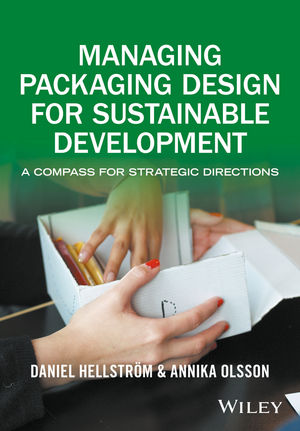Sustainability: History of Scrap
Reprocessing Gives Flexible Packagers a Sustainable Edge

There is considerable pressure on flexible packagers to incorporate as much reclaim as possible. Some of this pressure comes from resin prices and some from the sustainability programs retail outlets use to determine shelf positioning, as well as from some large packaging companies that employ similar scoring systems when selecting vendors. Thus, as the flexible packaging industry grows there is a parallel growing demand for usable reclaim.
The amount of plastic materials reclaimed from the waste stream has grown significantly in both the post consumer and post industrial segments, with materials from flexible packaging making up a significant amount of the overall volume. Not only has the growth of flexible packaging in markets formerly held by cans and paper added to the plastic scrap volume, it has also altered the characteristics of the material in ways that have challenged recyclers and recycling equipment manufacturers.
Thirty years ago, when Erema was a new company, 3-layer blown films were state-of-the-art, and in-house generated scrap could be easily buried in an interior layer, giving the finished film some heft at little expense. Today, 3-layer film is a commodity and technologically advanced film comes in 5-, 7-, 9- and even 11-layers and possibly more. Each layer can be configured to deliver specific aspects of a desired, application engineered performance.
Dealing with Inks and Graphics
In some cases, graphics are reverse printed and, in most cases, when consumer goods are being packaged, the pouch probably holds elaborate point of purchase, attention-compelling graphics. These exciting new graphics that have contributed to the growth of flexible packaging usually require a large amount of ink. Dealing with heavily inked packaging scrap is a challenge to recycling machinery manufacturers.
While ink pigment never disappears, the solvents and binding agents that hold ink to the plastic surface become contaminating gases during reprocessing. In effect, the more ink, the more gas that needs to be vented out of the system. Erema anticipated the growth of flexible packaging and the need for recycling systems that could handle contamination from inked plastics.
More than twenty years ago, Erema modified its basic cutter/compactor vented extruder system to improve reprocessing inked films by improving the ability to vent off contaminating gases. Erema continues to improve the system as market conditions change.
In 1992, Erema introduced the Radial VE systems; and followed this in 1994, with the TVE; and in 2005 with the TVE + 5D, designed to improve mixing. Today, with over twenty years of carefully managed evolution, the TVEplus, introduced in 2010, is a system that includes advanced filtration located upstream from the extruder degassing stage. Coupled with Erema’s RTF automatic backflushing screenchangers, this system is successfully at work all over the world, converting heavily inked post industrial and post consumer material into valuable, high quality pellets. Erema now has over 800 of this unique, patented system in operation around the world.
A comparatively small amount of post consumer material makes its way into flexible packaging with the possible exception of heavier walled horticulture, salt and similar bags. Most of the material that goes into flexible packaging is in-house generated scrap and clean post industrial waste from outside sources. In-house generated scrap is usually reprocessed in a central extrusion system and live edge trim can be pelletized and fed back into a gravimetric feed system via the Erema KAG edge trim system. There are over 100 Erema KAG systems in operation in North America. In these processes, the composition of the finished film is under complete control of the film supplier who may blend in additives and fend off contaminants.
Reprocessors Help the FP Market
Often, packaging film manufacturers choose to partner with a dedicated reprocessing company. In ideal conditions, the reprocessor becomes knowledgeable of its clients’ goals and film performance characteristics and returns scrap film in pellets precisely matched to the desired specs. An effective contract reprocessor diligently strives to keep contamination out of any material being reclaimed. One contract reprocessor fastidiously bars postconsumer material from the facility where contracted scrap is being handled. A contracted reprocessor may also offer a compounding service mixing in desired additives. There is an increasing market for compounded reclaim and Erema has recently introduced an in line compounding system streamlining the process, to meet this growing demand.
Many heavily printed flexible packaging films are destined for more forgiving downgraded recycling markets, such as can liners and mulch films. Thanks to some very creative thinking on the part of one large agricultural film user, these black or otherwise dark colored films are being reclaimed themselves, in this case finding new life as attractive, reusable shopping bags.
What we have noticed over the years is that recycling has moved from a comparatively simple process to an increasingly complex one. Material to be reprocessed comes from multi-layer films, heavily inked films and, because of significant advances in printing, films custom designed and printed in very short runs. To meet the demands of these newly configured materials, recycling equipment has become more sophisticated with advance controls allowing minute adjustments to production and automation, continually reducing labor requirements.
Though there have been advances in washing and sorting post consumer material, more will have to be done to allow much post consumer material to be profitably added to the highly finessed material typical of most flexible packaging. Ultimately, the degree of consumer acceptance of post consumer materials will determine the success of this market.
Looking for a reprint of this article?
From high-res PDFs to custom plaques, order your copy today!








